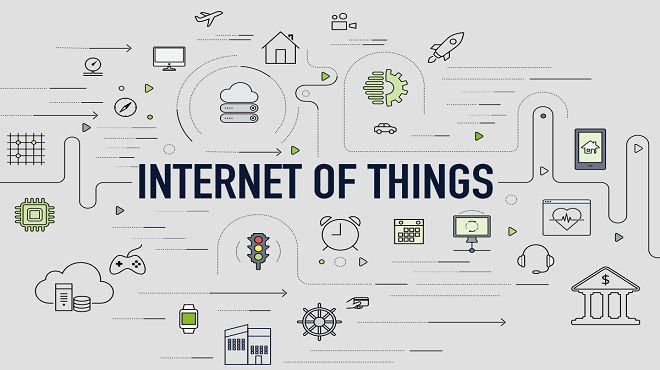

The IoT security is the prime concern nowadays but before that it is important to know what is meant by IoT (Internet of Things) actually. Industry experts define an IoT device as the one which are objects connected to the Internet (in some cases, they are connected to a Local Area Connection). Examples of IoT devices include smart TVs, wi-fi routers, internet-connected cars, smart locks, smart cameras, voice assistants, some medical devices, smart lights, fitness bands, etc. The IoT devices are the foremost preference among consumers and manufacturers. Consumers usually prefer these devices for the added functionality whereas manufacturers prefer them because they permit them to collect information regarding the ways in which consumers use their services/products. On this basis, they can customize future products.
The communication is not encrypted:
It is found that there are many IoT devices which just lack fundamental encryption to conceal the data transferred between the central server and the device. The absence of encryption can reveal the personal information of users if a malicious hacker could spy in on his/her personal details. In addition to that, there are several IoT devices which ask for more permission beyond the requirement. During such situations, the device particular had permission to make procurement on its own. Each permission which is taken as an extra within an IoT device adds an extra vulnerability layer. This suggests that the security of the device is higher if the permissions are fewer.
Lack of relevant skills and manpower:
It is true that the process of development of an end-to-end IoT solution is difficult. It needs a pool of talent which is basically multidisciplinary in nature. For the purpose of increasing IoT security, skills in fields like cloud computing, designing embedded systems, IoT application development, cloud architecture, back-end management, security designs, and data analytics are critical. When analyzed properly, it came to know that there are not so many courses or colleges that provide a degree program in the field of IoT. The specialization classes are required to impart training to individuals for the different roles in the field of IoT.
If you are enthusiastic in the field of IoT then it is recommended to gain sufficient skills which would allow you to resolve the corresponding security issues. The outcome would be you develop quickly in this field and will gain a good payout.
IoT comes with many security threats:
The key difference between the previous internet technology and IoT is that the number of possible threats is very higher in IoT. The reasons why security threats are high in IoT are described below:
Increased number of points of exposure: The increasing number of connected devices, systems, applications, and end users imply that there are more points of exposure.
High impact of attacks: There are many connected devices in different applications and the applications are centered on diverse standards, they interrelate with different systems and they even have diverse objectives. Particularly for critical infrastructure applications in which there is a high influence of attacks, the stakes are comparatively higher for hackers which elevate the threat level.
IoT devices turn out to be new attack points: In the IoT field, every compromised device turns out to be a new attack point, and this implies an increased possibility of attacks.
Raising automation of IoT security tasks
The anticipated growth of IoT devices is billions, so manually managing different security tasks like withdrawing certificates, separating compromised devices, etc. in the majority of IoT solutions presently today would not be feasible. Those security automation methods that combine artificial intelligence and security solutions are becoming prevalent.
For instance, the concept of next-generation activity monitoring allows anomaly detection, based on the latest machine learning algorithms. Depending on mathematical risk factors, you can classify the files which are malicious from the good ones. This will teach a machine to jump to the proper decisions on such kinds of files in real time. It is known that this method facilitates the autonomous decision-making process and also alters the way an IoT device comprehends, classifies, and regulates the execution of each file.
The user interface is at risk:
A malicious hacker will first look at the user interface of the device for checking any vulnerability. In order to understand this, for example, he/she may attempt to use the “I forgot my password” option for resetting it or merely to get your details like username or email. A seamlessly designed IoT device is the one which locks out a user from trying to log in many times. Working on this point will prevent dictionary and brute force attacks which actually target passwords, and provides great security to your device credentials. It happens in some cases that the password may be directed from the device towards the central server in form of plain text, which means that it is not encrypted. This indicates insecurity because someone may read all your data.
Lack of security in default login credentials:
It is of no surprise that lots of people keep their default usernames and passwords. The secured IoT device is the one which may hide the “Change password/Username” options within the UI, hidden for the majority of users. Whenever every IoT devices work to keep a randomized username and password then there would not be any security issues. However, it should be noted that it is a costly process to implement in competitive industries with low-profit margins.
Hesitation for Market-readiness:
It is usually found that people are still feared by the technology’s potential. For example, some people may extensively share articles and related videos on home automation systems as well as self-driving cars; however, they would hesitate if asked to adopt them personally. The major concern people have is to allow a machine to take the command of important things and this is essentially a thought process from a market viewpoint. It is true that IoT guarantees superior home security solutions but people are yet hesitant to leave their home under the automatic control and supervision. The situation will gradually improve as more and more people start valuing the technology’s worth.
Whenever the users of IoT based services and products increases, there will be improvements in regulations, bug fixes, the support provided, controlling the bodies and many more things in order to fulfill the demands of customers.
What are the major kinds of attacks against IoT devices?
It is a fact that smart devices can be hacked into many different ways, based on the type of vulnerability the hacker wishes to exploit. Let’s have a look at the major kinds of attacks prevailing against IoT devices:
1) Malware attacks
The device’s login credentials are being targeted by the recurrent and well-known malware attacks. It is observed in recent time that other kinds of malware like ransomware have uniquely influenced IoT devices. It is known that the malware is generally interoperable, needing only slight modifications. Devices like smart TVs and relevant gizmos are vulnerable to this type of threat because users may unintentionally click on some malicious links or they may download some infected apps.
2) Password attacks
Password attacks like brute force or dictionary usually target the login information of a device by attacking it with numerous username and password variations until it gets the correct one. The reason why these attacks are easily successful is that the majority of people make use of a simple password. In addition to that, as per a study, almost 60% of users make use of the same password repeatedly. Thus, if an attacker gains access to one device, it is quite possible that they gain access to every device.
3) Botnet enslaving
IoT devices are vulnerable to a botnet. The devices are easy to hack, and it becomes difficult to analyze if they are compromised. After your device is confined, it could be used for an extensive range of cybercriminal conducts, like DDoS attacks, directing pam emails, carrying out click fraud, and Bitcoin mining. It is known that Mirai is the largest IoT botnet and it was created based on default usernames and passwords.
Sniffing (Man-in-the-middle) attacks
This is the type of attack in which a malicious hacker interrupts the Internet traffic that enters or leaves out of a smart device. For this, the common target is a Wi-Fi router because it comprises of all the traffic data directed to the network and it can later be utilized to control every device which is connected to the same, like smartphones or PCs.
Remote access
At first, instance, seeking control of an IoT device does not feel very threatening. For example, the attack is serious if the attacker attains control of your car when you are driving it. The situation is not hypothetical and it is real. In this example, the whitehat hackers were capable to hack in the car’s braking system as well as acceleration.
Concluding Note:
IoT devices come with lots of advantages and they can be effective if the security issues are fixed properly. It is assured that shortcomings in this field are temporary and even researchers anticipate that the technology is the next big technology to influence our regular life.

Oct 24, 2025

Oct 23, 2025

Oct 20, 2025

© 2017 All rights reserved.